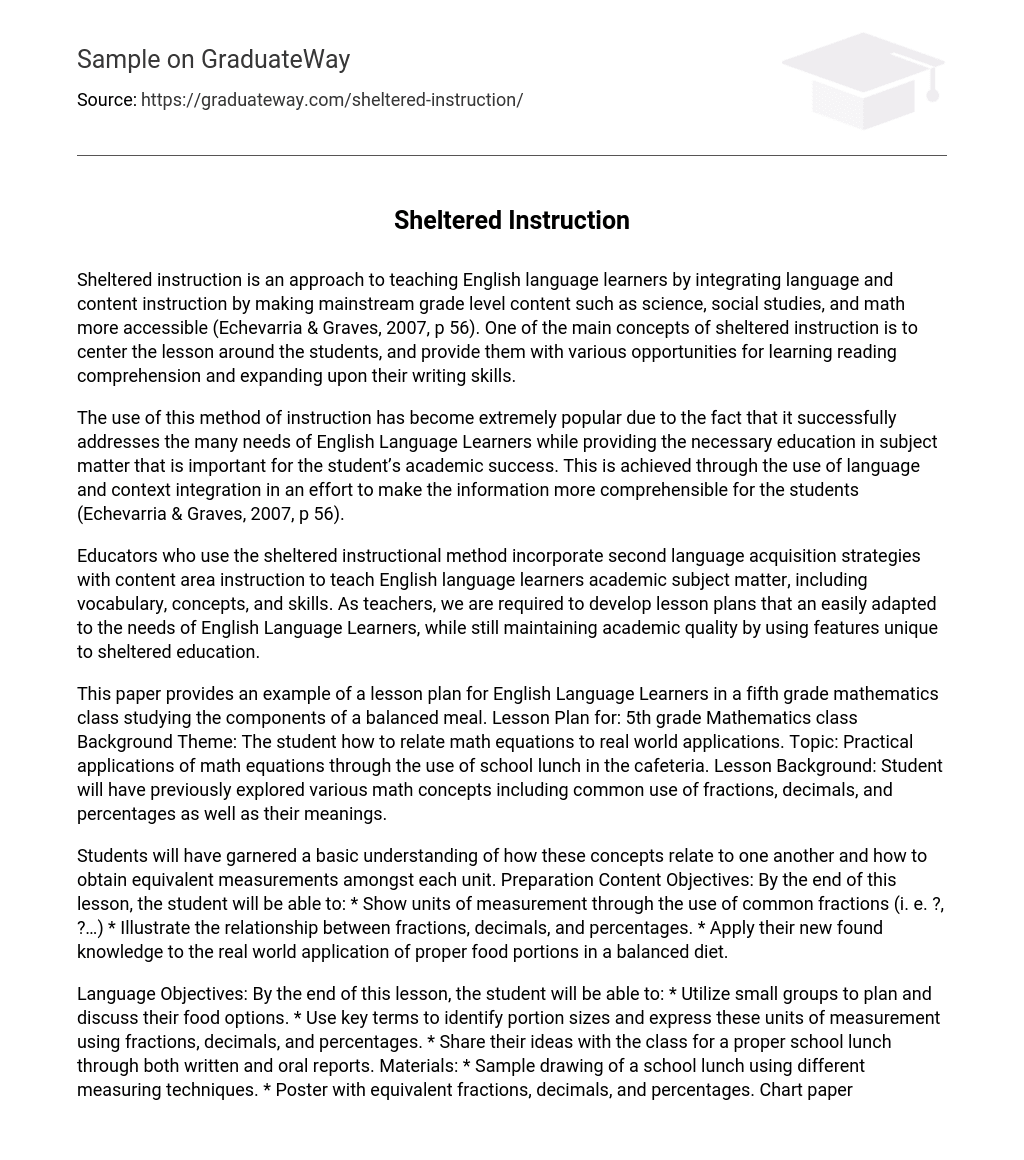Sheltered instruction is an approach to teaching English language learners by integrating language and content instruction by making mainstream grade level content such as science, social studies, and math more accessible (Echevarria & Graves, 2007, p 56). One of the main concepts of sheltered instruction is to center the lesson around the students, and provide them with various opportunities for learning reading comprehension and expanding upon their writing skills.
The use of this method of instruction has become extremely popular due to the fact that it successfully addresses the many needs of English Language Learners while providing the necessary education in subject matter that is important for the student’s academic success. This is achieved through the use of language and context integration in an effort to make the information more comprehensible for the students (Echevarria & Graves, 2007, p 56).
Educators who use the sheltered instructional method incorporate second language acquisition strategies with content area instruction to teach English language learners academic subject matter, including vocabulary, concepts, and skills. As teachers, we are required to develop lesson plans that an easily adapted to the needs of English Language Learners, while still maintaining academic quality by using features unique to sheltered education.
This paper provides an example of a lesson plan for English Language Learners in a fifth grade mathematics class studying the components of a balanced meal. Lesson Plan for: 5th grade Mathematics class Background Theme: The student how to relate math equations to real world applications. Topic: Practical applications of math equations through the use of school lunch in the cafeteria. Lesson Background: Student will have previously explored various math concepts including common use of fractions, decimals, and percentages as well as their meanings.
Students will have garnered a basic understanding of how these concepts relate to one another and how to obtain equivalent measurements amongst each unit. Preparation Content Objectives: By the end of this lesson, the student will be able to: * Show units of measurement through the use of common fractions (i. e. ?, ?…) * Illustrate the relationship between fractions, decimals, and percentages. * Apply their new found knowledge to the real world application of proper food portions in a balanced diet.
Language Objectives: By the end of this lesson, the student will be able to: * Utilize small groups to plan and discuss their food options. * Use key terms to identify portion sizes and express these units of measurement using fractions, decimals, and percentages. * Share their ideas with the class for a proper school lunch through both written and oral reports. Materials: * Sample drawing of a school lunch using different measuring techniques. * Poster with equivalent fractions, decimals, and percentages. Chart paper titled “Ideal Food Portions for School Lunch” * Poster boards for the various groups * Calculators * Scratch paper * Colored pencils, crayons, and/or markers Motivation * Have student name the various foods they have consumed in the school cafeteria.
For students who have transferred from other countries, ask how the foods in their native countries differ from American foods in style and portion size. Discuss any vocabulary related to listed food choice that may be unfamiliar to some students. Have students brainstorm on scratch paper different ideas for foods to include in their balanced school lunch. List student ideas for a proper balanced school lunch upon “Ideal Food Portions for School Lunch” chart paper. * Read and discuss the objectives for the lesson with students. Presentation * Show the students different sample food options that can be used to create a proper school lunch utilizing the math concepts the students have learned. * Discuss with the students the importance of proper food portions and the effects it has on a healthy diet.
Practice * Divide the students into small groups and distribute needed materials. * Explain to the students the need to create a balanced school lunch using proper food portions. Emphasize the need to use proper math equivalents when measuring food portions. * Write and explain step using visual cues such as sample drawing, poster showing proper math equivalents, and discuss appropriate portion size. * Monitor group progress and encourage the use of key terms in their project. Provide feedback as necessary.
Review/Assessment * As each team presents their project, the other teams will evaluate one another’s presentation and basic understanding of the concepts being presented. * Once all presentations have concluded, go over the findings and objective of the lesson to see if they were met. Homework * Ask students to relate the concepts they used today in creating a balanced dinner for their family. Have students design a sample meal with proper portions utilizing common fractions, decimal, and percentages.





